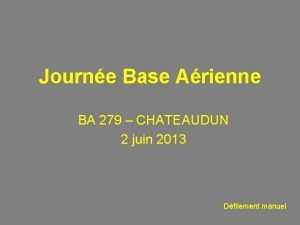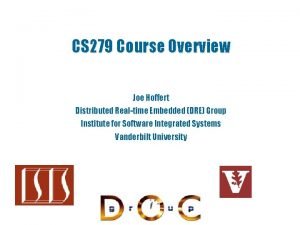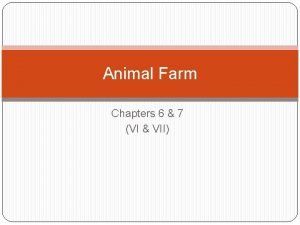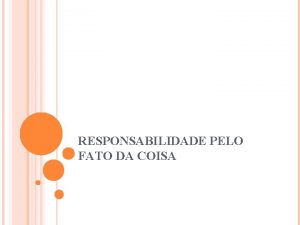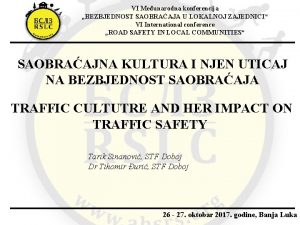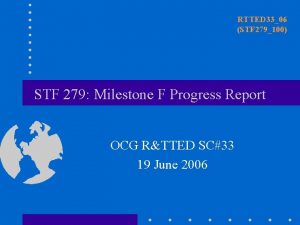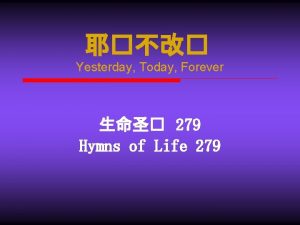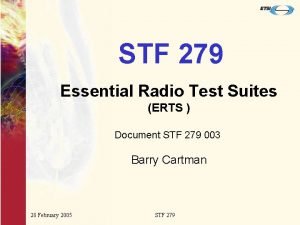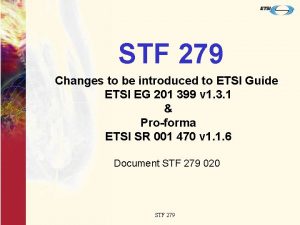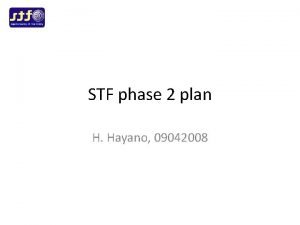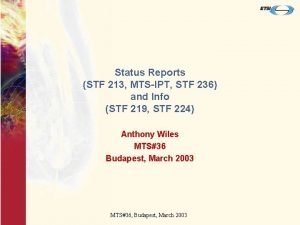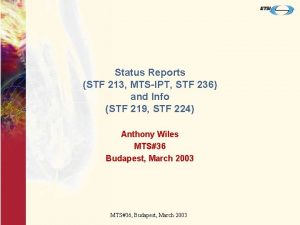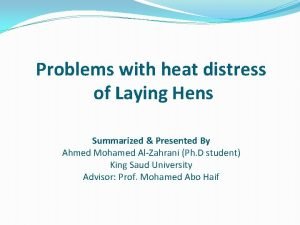STF 279 First review of HENs STF 279005













- Slides: 13

STF 279: First review of HENs STF 279/005 and STF 279/006

Objectives of this first review • Determine set of HENs to review • Assess structure against template SR 001 470 • Review consistency between HENs: – within one TB or WG – between different TBs and WGs • Report findings to OCG RTTED SC#27 • Increase STFs familiarity with HENs: – to help review of ETSI Guidance material – to refine second pass addressing TCAM points

Selection of subset to review • New. Approach web site ETSI RTTE 173 • ETSI WP “RTTE HENs” 237 • less “irrelevant” duplicates -66 171 • less ENs still at drafting stage -23 148 • less “EMC” standards -44 Subset to review 106 • The chosen subset comprises 3426 pages


Minor discrepancies • In ETSI WP but not on • On New. Approach web but not in ETSI WP – EN 300 830 v 1. 1. 1 – EN 301 011 v 1. 1. 1 – EN 301 427 v 1. 2. 1 – EN 300 385 : 1999 – EN 301 419 -3 v 5. 0. 2 – We did not check superseded ENs – We ignored the ETSs though some are still current

Matrix of review details • Review details shown in Excel spreadsheet (see STF 279_006) – Rows represent the HENs • grouped in families of similar provenance – Columns show features of HENs: • related to 15 components of the template • subjective “style” (one of 6 types)

Reviewed template components • Title format • Technical requirements • Clause Structure • Environmental requirements for test • IPR and Forward • Standard Introduction • Scope • References • Definitions etc • Environmental Profile • Interpretation of results • Essential radio test suites • Other test specifications • EN Requirements Table • Titles in official languages

Styles A to D A: Largely self contained with few cross references to other parts or other ENs B: Part of a multipart standard with many references to other part(s) for requirements and/or test suites C: Comprehensive system specification that goes well beyond the essential requirements and their corresponding test suites D. Largely self-contained (as C) but uses formal methods such as TTCN (e. g. TETRA)

Styles E and F E. Wide variety of equipment types within a single (part of a) EN (e. g. TM 4 standards): • EITHER by reference to several other different standards • OR by extensive use of tables of parameters related to different equipment types. F. Scope greatly exceeds essential requirements with subset of clauses only being cited in the OJ (e. g. some SMG standards)

Top ten observations – Nearly half the HENs did not have “essential requirements” in the title. – Several (older) HENs make undated references. – “Environmental profile” & “Environmental requirements for test” are inconsistently implemented - some using standards words, others specifying precise ranges, other omitting one or both clauses. – A quarter of the HENs reviewed has an “Other test specifications” clause.

Top ten observations – Interpretation of results (measurement uncertainty) frequently does not appear where the template indicates, often difficult to locate, sometimes absent. – Nearly a quarter of the HENs reviewed did not included a “EN Requirements Table” – Almost no EN had titles in a complete set of official languages; nearly half had the Annex missing.

Top ten observations – Wide variety of means of referencing individual Test Specifications to individual Requirements. – About as many standards are largely selfcontained (Style A) as there are standards which depend heavily on references to other documents (Style B). – The essentiality of receiver parameters seems appears inconsistent between families of HENs.

Next steps • Make second pass focussing on technical issues and TCAM comments, but first: – Best to clarify views on the ETSI Guidance material so that technical assessment can be carried out against defined understanding – Need to agree a list of “issues” which are reflected by the TCAM comments
 Ba 279
Ba 279 The secrets carried
The secrets carried Aleks math intervention
Aleks math intervention What deal is napoleon contemplating
What deal is napoleon contemplating Impromptu definition animal farm
Impromptu definition animal farm Responsabilidade civil
Responsabilidade civil Stf doboj
Stf doboj Chapter review motion part a vocabulary review answer key
Chapter review motion part a vocabulary review answer key Ap gov review final exam review
Ap gov review final exam review Nader amin-salehi
Nader amin-salehi Inclusion criteria examples
Inclusion criteria examples Narrative review vs systematic review
Narrative review vs systematic review Care first counselling review
Care first counselling review World history semester 2 review
World history semester 2 review
